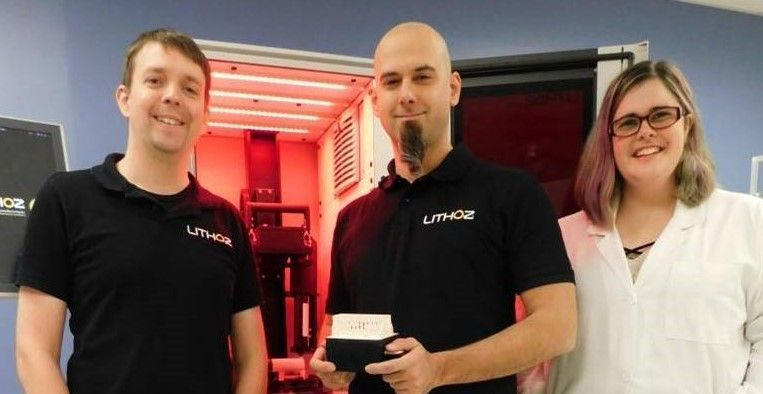3D printed ceramic fluid manifolds are enabling advancements in bioprinting at the International Space Station. Ceramic materials provided better biocompatibility than printed polymers resulting in larger viable structures. The additive manufactured ceramics have been in service since November 2019.

A spacecraft arrived at the International Space Station (ISS) on November 2, 2019 with supplies for the 3D BioFabrication Facility (BFF). Besides human cells and bioinks for BFF, also being tested during this mission are new components of Techshot’s tissue conditioning system that were manufactured by Lithoz America, LLC. The latest round of microgravity bioprinting in December yielded larger biological constructs than the first BFF attempts in July.
Specializing in additive manufacturing systems for advanced ceramics, the Troy, New York company partnered with Techshot to develop ceramic fluid manifolds used inside bioreactors, which provide nutrients to living materials printed in space by BFF. Expected to replace the prototype polymer manifolds tested in space this summer, the Lithoz ceramic manifolds are being tested aboard the ISS for their biocompatibility, precision, durability and overall fluid flow properties. The ceramic manifolds were printed using lithography-based ceramic manufacturing (LCM) on a high resolution CeraFab printer.
Techshot and Lithoz engineers and scientists worked together to optimize the design and the manufacturing processes required to make it. “It’s been an absolute pleasure working with Lithoz,” said Techshot Senior Scientist Dr. Carlos Chang. “Their expertise in ceramic processing really made these parts happen.” “The success of ceramic additive manufacturing depends on working together with design, materials, and printing,” said Lithoz Vice President Shawn Allan. “Design for Ceramic Additive Manufacturing principles were used along with print parameter control to achieve Techshot’s complex fluid-handling design with the confidence needed to use the components on ISS.”
The work highlighted an ideal use case for ceramic additive manufacturing to enable production of a special compact device that could not be produced without additive manufacturing, while enabling a level of bio-compatibility not achievable with printable polymers. Techshot engineers were able to interface the larger bio-structures with the Lithoz-printed ceramic manifolds. Next steps will focus on optimized integration of these components and longer culturing of the printed biological materials.
Conditioned human tissues from this mission are expected to return to Earth in early 2020 for evaluation.
Lithoz® is a full-service provider of high-performance and bioresorbable ceramics produced by the patented LCM technology. Lithoz was founded in 2011 and since then strives to break the boundaries of ceramic production and to support customers in expanding the manufacturing opportunities for the ceramic industry. Customers can benefit from a variety of outstanding materials ranging from alumina, zirconia, silicon nitride, silica-based for casting-core applications through medical-grade bioceramics. In addition, Lithoz® offers application and material development to its customers in cooperation with renowned research institutes all over the world. Since 2016, Lithoz has been ISO 9001-2015 certified.
Headquartered in Vienna (Austria) the company has an export share of almost 100%, above 70 employees and has had a subsidiary in the USA. The company's outstanding expertise has been a decisive success.